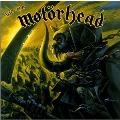| Author |
Message |
 |
|
|
 |
|
Advert
|
Forum adverts like this one are shown to any user who is not logged in. Join us by filling out a tiny 3 field form and you will get your own, free, dakka user account which gives a good range of benefits to you:
- No adverts like this in the forums anymore.
- Times and dates in your local timezone.
- Full tracking of what you have read so you can skip to your first unread post, easily see what has changed since you last logged in, and easily see what is new at a glance.
- Email notifications for threads you want to watch closely.
- Being a part of the oldest wargaming community on the net.
If you are already a member then feel free to login now. |
|
 |
![[Post New]](/s/i/i.gif) 2014/07/31 01:09:42
Subject: 'General' Probability for 6 Sided Dice (Edited First Post)
|
 |

Growlin' Guntrukk Driver with Killacannon
|
Just to let you know my math background, I have a BS in Physics, and have taken Probability and Calculus as far as Partial Differential Equations many years ago. I was trying to figure out the probability of successes (to hit) on a 3+ with 5 dice, and then to wound on a 6. So far I have these equations in Excel:
Ph = probability to hit; d = number of dice; s = number of successful hits; h = minimum roll to hit;
Pw = probability to wound; w = minimum roll to wound; Phw = probability to hit and wound
Ph(s)=d!/[s!*(d-s)!]*{[(h-1)/6]^(d-s)}*{[(7-h)/6]^s}
0 hits from 5 dice hitting on 3+: Ph(0) = 0.00411522633
1 hit from 5 dice hitting on 3+: Ph(1) = 0.0411522634
2 hits from 5 dice hitting on 3+: Ph(2) = 0.1646090535
3 hits from 5 dice hitting on 3+: Ph(3) = 0.329218107
4 hits from 5 dice hitting on 3+: Ph(4) = 0.329218107
5 hits from 5 dice hitting on 3+: Ph(5) = 0.1316872428
Next, trying to figure out the probability of rolling at least one 6 to wound from each set of successful 3+ rolls, I subtract the the probability of not wounding at all from 1:
Pw(s)=1-[(w-1)/6]^s
At least 1 wound from 0 dice wounding on 6: Pw(0) = 0
At least 1 wound from 1 dice wounding on 6: Pw(1) = 0.166666667
At least 1 wound from 2 dice wounding on 6: Pw(2) = 0.305555556
At least 1 wound from 3 dice wounding on 6: Pw(3) = 0.421296296
At least 1 wound from 4 dice wounding on 6: Pw(4) = 0.517746914
At least 1 wound from 5 dice wounding on 6: Pw(5) = 0.598122428
Last, I multiply the probability to hit by the probability to wound for each set of successful 3+ rolls, then add all of the results to find the total probability of rolling a 6 to wound with 5 dice while hitting on 3+.
Pwh(d) = Ph(0)*Pw(0)+...+Ph(d)*Pw(d)
At least 1 wound from 5 dice hitting on 3+ and wounding on 6: Pwh(5) = 0.4450710427
What I like about this system is that I can adjust for different number of dice, to hit and to wound values. I probably re-invented the wheel, and am working on figuring out how to do algorithms in Excel, but I can definitely use this system of equations to find two step probabilities. What do you think?
|
|
This message was edited 3 times. Last update was at 2014/08/01 17:59:44
I don't write the rules. My ego just lives and dies by them one model at a time. |
|
|
 |
 |
![[Post New]](/s/i/i.gif) 2014/07/31 02:01:27
Subject: 'General' Probability Questions for 6 Sided Dice
|
 |

Veteran Knight Baron in a Crusader
|
Purple, because aliens don't wear hats

|
|
|
 |
 |
![[Post New]](/s/i/i.gif) 2014/07/31 03:05:54
Subject: 'General' Probability Questions for 6 Sided Dice
|
 |

Longtime Dakkanaut
|
For the chance of rolling a single six on one of the dice out of 5 dice.
we will do this a little backwards, first we will take the chance of not rolling a 6 on a dice 5 times.
so (5/6)*(5/6)*(5/6)*(5/6)*(5/6)= 3125/7776 is the chance of not rolling a 6 on any die when we roll 5 dice. Or 40.2% chance to not roll a 6
as there are 6^5 possible combinations of dice when we roll 5 dice, there should be 7776 outcomes- which we see in our denominator above.
we can take the chance of not rolling a 6, 3125 and subtract the remaining combinations 7776 and get 4651/7776 which is 59.8% chance to roll at least 1 six on 5 dice.
|
|
This message was edited 2 times. Last update was at 2014/07/31 03:49:13
|
|
|
 |
 |
![[Post New]](/s/i/i.gif) 2014/07/31 06:31:14
Subject: 'General' Probability Questions for 6 Sided Dice
|
 |

Stubborn Hammerer
$1,000,000 and a 50% discount
|
blaktoof wrote:For the chance of rolling a single six on one of the dice out of 5 dice.
we will do this a little backwards, first we will take the chance of not rolling a 6 on a dice 5 times.
so (5/6)*(5/6)*(5/6)*(5/6)*(5/6)= 3125/7776 is the chance of not rolling a 6 on any die when we roll 5 dice. Or 40.2% chance to not roll a 6
as there are 6^5 possible combinations of dice when we roll 5 dice, there should be 7776 outcomes- which we see in our denominator above.
we can take the chance of not rolling a 6, 3125 and subtract the remaining combinations 7776 and get 4651/7776 which is 59.8% chance to roll at least 1 six on 5 dice.
Blaktoof is very correct about this for a couple of reasons:
Firstly you need to weigh the importance of each result (Bayesian probability) so that you do not overstate the importance of a less crucial piece of data.
The most important result: the 6.
The result of a 6 is in itself a result of a 3+, hence the 6 is also an automatic success of the 3+ rule, which will be important later.
The chance of a 6 not being rolled is as blaktoof said: 40.1878%, hence the chance that a single 6 is rolled in any combination is 59.8122%.
Now we have the most crucial piece of data we can continue:
Chance of not rolling a 3+ at all is 0.4115%, ergo a 99.9959% chance of rolling a 3+ (may seem strange, but there are only 32 combinations yielding all 1s, or any combinations of 1s and 2s).
So the chance of getting any result of a 3+ is 99.9959%, and the chance of one of those being a 6 is still 59.8122% because if it's a 6, it's also a 3+.
Thought its late in the afternoon so I could be dozy and wrong.
|

just hangin' out, hangin' out |
|
|
 |
 |
![[Post New]](/s/i/i.gif) 2014/07/31 11:50:43
Subject: 'General' Probability Questions for 6 Sided Dice
|
 |

Growlin' Guntrukk Driver with Killacannon
|
Thanks for the input, but this is a two step problem: roll 5 dice with 3+ successes, then roll the successes for at least one 6. So the second part of the problem is weighted by the first.
|
I don't write the rules. My ego just lives and dies by them one model at a time. |
|
|
 |
 |
![[Post New]](/s/i/i.gif) 2014/07/31 13:24:41
Subject: 'General' Probability Questions for 6 Sided Dice
|
 |

Longtime Dakkanaut
|
So you would like to know the outcome of rolling 5 dice, needing 3+ to succeed. Then the dice that succeed you roll only those again and want to know the chance of needing a 6+ on the second set of rolls?
And you want to know the outcome for rolling 5 dice to have
5 successes
4 successes
3 successes
2 successes
1 success
0 succeses
then the outcome of rolling a 6 with the successful dice?
|
|
|
 |
 |
![[Post New]](/s/i/i.gif) 2014/07/31 16:23:48
Subject: 'General' Probability Questions for 6 Sided Dice
|
 |

Sacrifice to the Dark Gods
|
 Ghenghis Jon wrote: Ghenghis Jon wrote:
0 successes out of 5 trials: [(1/3)^5]*[(2/3)^0]=0.00411522633
1 success out of 5 trials: [(1/3)^4]*[(2/3)^1]=0.00823045267
2 successes out of 5 trials: [(1/3)^3]*[(2/3)^2]=0.01646090534
3 successes out of 5 trials: [(1/3)^2]*[(2/3)^3]=0.03292181069
4 successes out of 5 trials: [(1/3)^1]*[(2/3)^4]=0.06584362139
5 successes out of 5 trials: [(1/3)^0]*[(2/3)^5]=0.13168724279
I immediately knew this was wrong because the total of the probabilities do not add up to 1.
You need to multiply the first and last line by 1, second and fifth by 5 and the third and fourth by 10. I think this is due to the formula calculating an instance rather than all instances, e.g 1 Success being SFFFF but it could also be FSFFF (S being success and F Fail) if you see what I mean...yeah I explained that badly.
But anyways that will get you to 100% on the first part.
I got the figures to come out to:
0 Successes + 1(or more) 6s = 0.00%
1 Successes + 1(or more) 6s = 0.69%
2 Successes + 1(or more) 6s = 5.03%
3 Successes + 1(or more) 6s = 13.87%
4 Successes + 1(or more) 6s = 17.05%
5 Successes + 1(or more) 6s = 7.88%
I think this is right but I'd check it yourself. Hope it helps.
|
|
This message was edited 1 time. Last update was at 2014/07/31 16:25:46
|
|
|
 |
 |
![[Post New]](/s/i/i.gif) 2014/08/01 17:58:36
Subject: 'General' Probability Questions for 6 Sided Dice
|
 |

Growlin' Guntrukk Driver with Killacannon
|
 Callarthis wrote: Callarthis wrote:You need to multiply the first and last line by 1, second and fifth by 5 and the third and fourth by 10. I think this is due to the formula calculating an instance rather than all instances, e.g 1 Success being SFFFF but it could also be FSFFF (S being success and F Fail) if you see what I mean...yeah I explained that badly.
But anyways that will get you to 100% on the first part.
I got the figures to come out to:
0 Successes + 1(or more) 6s = 0.00%
1 Successes + 1(or more) 6s = 0.69%
2 Successes + 1(or more) 6s = 5.03%
3 Successes + 1(or more) 6s = 13.87%
4 Successes + 1(or more) 6s = 17.05%
5 Successes + 1(or more) 6s = 7.88%
I think this is right but I'd check it yourself. Hope it helps.
Yes, seeing someone else providing the same values independently really helped my confidence that I am on the right track. Thank you.
|
I don't write the rules. My ego just lives and dies by them one model at a time. |
|
|
 |
 |
|
|